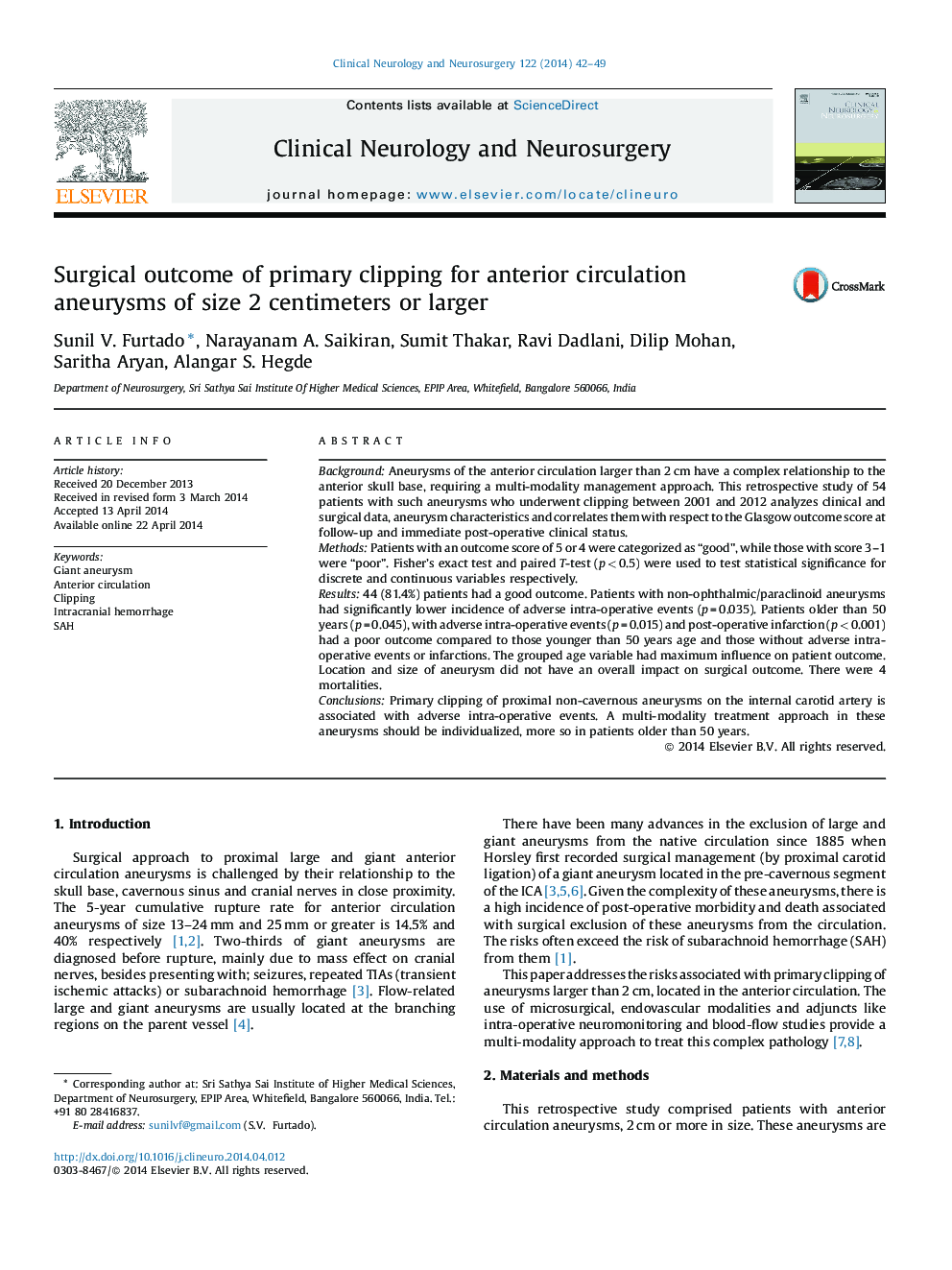| Article ID | Journal | Published Year | Pages | File Type |
|---|---|---|---|---|
| 3040252 | Clinical Neurology and Neurosurgery | 2014 | 8 Pages |
BackgroundAneurysms of the anterior circulation larger than 2 cm have a complex relationship to the anterior skull base, requiring a multi-modality management approach. This retrospective study of 54 patients with such aneurysms who underwent clipping between 2001 and 2012 analyzes clinical and surgical data, aneurysm characteristics and correlates them with respect to the Glasgow outcome score at follow-up and immediate post-operative clinical status.MethodsPatients with an outcome score of 5 or 4 were categorized as “good", while those with score 3–1 were “poor”. Fisher’s exact test and paired T-test (p < 0.5) were used to test statistical significance for discrete and continuous variables respectively.Results44 (81.4%) patients had a good outcome. Patients with non-ophthalmic/paraclinoid aneurysms had significantly lower incidence of adverse intra-operative events (p = 0.035). Patients older than 50 years (p = 0.045), with adverse intra-operative events (p = 0.015) and post-operative infarction (p < 0.001) had a poor outcome compared to those younger than 50 years age and those without adverse intra-operative events or infarctions. The grouped age variable had maximum influence on patient outcome. Location and size of aneurysm did not have an overall impact on surgical outcome. There were 4 mortalities.ConclusionsPrimary clipping of proximal non-cavernous aneurysms on the internal carotid artery is associated with adverse intra-operative events. A multi-modality treatment approach in these aneurysms should be individualized, more so in patients older than 50 years.
